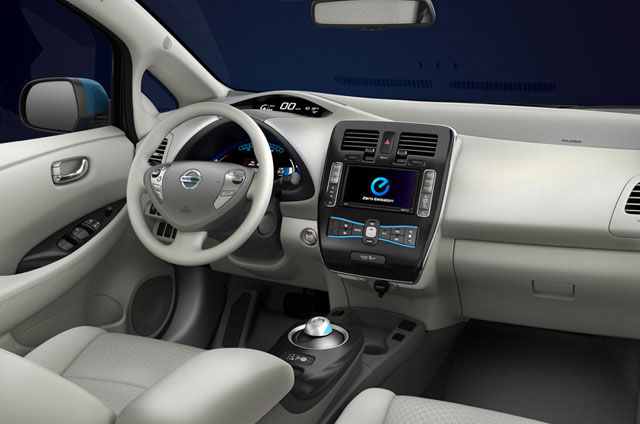Alternatives to the agency model
Predictably, all the ruckus is over the off and on ramps.

Electric Model: Japanese car manufacturers seriously dented Detroit, and are doing it again in the electric vehicle stakes. image Nissan USA
An entirely refreshing idea has been suggested by Mahurangi West man Cluny Macpherson.
Professor Macpherson contends that bus bays should be provided opposite Pūhoi and Mahurangi West. This would facilitate folk using public transport, which he says is necessitated by the now urgent need to curtail fossil fuel use.
And bus bays would be used. Already a number of Mahurangi West folk are driving to most northerly bus station (at Albany) and bussing from there. All those commuters are likely to be delighted to plug in their earphones, that much earlier.
But it is also possible that electronics-aided isolation would not be universal. Being neighbours, commuters would enjoy the company and conversation of their fellow passengers. These are just the situations, particularly if catalysed by cheerful bus drivers, in which bus communities evolve.
While not suggested by Macpherson, the Mahurangi Magazine suggests that only bus bays be built, and not vehicle access.
This suggestion will appal Libertarians, but the unavoidable fact is that private car use always undermines public transport, where it can operate in parallel. Cars, however, would never have been competitive with public transport had they not been allowed to use the atmosphere as an open sewer for their emissions.
Speaking of buses, it has been suggested that Pūhoi’s economy could suffer if tour buses couldn’t have direct access from the highway. This thinking reflects an outmoded, unsustainable tourism model—shoving short-stay tourists aboard the biggest busses available and racing them from one attraction to the next. A more low-key and sustainable tourism must be developed, one in which the scenic coast road from Ōrewa, to Waiwera, Pūhoi and on to Warkworth, or out to the Mahurangi regional park. In any event, Pūhoi and Mahurangi West will be more attractive to cycle and walking trail tourists, without direct motorway access.
NZ Transport Agency’s consultation on the Ōrewa–Wellsford motorway is a double tragedy.
New Zealanders lack a tradition of exploratory discussion—within days, issues become hopelessly polarised. Many will have dashed off submissions weeks ahead on the closing date, rather than enjoy exploring and imagining a multitude of scenarios, such as Cluny Macpherson’s.
However, the agency must bear the brunt of the responsibility, by failing its own slogan:
Building a better transport system for New Zealanders
Motorways are patently not a better transport system for New Zealanders, not unless the agency imagines itself on some parallel universe where the laws of physics don’t apply and carbon dioxide from vehicle emissions doesn’t reflect infrared heat.
A better transport system for New Zealanders will involve more rail. And it will involve smaller, lighter, smarter, safer and quieter electric cars, travelling shorter distances at a lower top speed. And it will seamlessly integrate with a national network of cycle and walking trails.
The United States Energy Department is investing US$12 billion in advanced vehicle technologies; Aotearoa’s recovery spending is on motorways! The transport agency must urgently reinvent itself and start producing models for this century and the next.
Perfect place to start would be Pūhoi to Wellsford.
